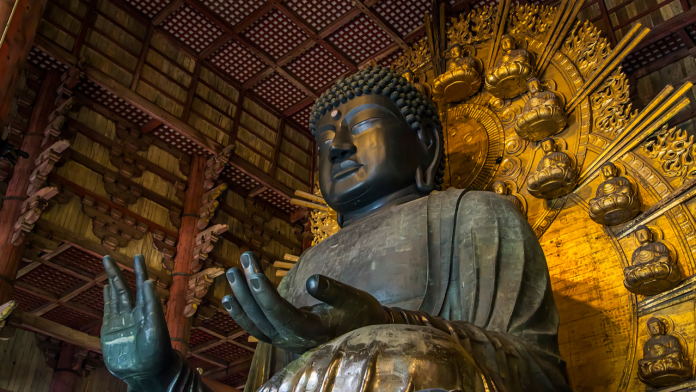Explore the beauty and history of Buddhist architecture in India – from stupas to rock-cut caves. Discover the rich heritage of Buddhist architectural wonders.
Buddhism, one of the world’s major religions, has a rich architectural heritage that beautifully intertwines with India’s historical and cultural landscape. In this article, we will explore the captivating world of Buddhist architecture in India, tracing its roots, evolution, and impact on the subcontinent.
Historical Background
To understand Buddhist architecture in India, we must delve into its historical origins. Siddhartha Gautama, who later became known as Buddha, lived in the 6th century BCE. His teachings led to the birth of Buddhism and initiated the construction of sacred sites and monuments. The spread of Buddhism and the patronage of various rulers played a crucial role in the development of Buddhist architecture.
Evolution of Buddhist Architecture
Buddhist architecture in India evolved over the centuries, reflecting the diverse regional influences and artistic styles. From simple wooden structures to magnificent stone edifices, it transformed significantly, adapting to the cultural milieu of different eras.
Key Elements of Buddhist Architecture
Buddhist architecture is characterized by several key elements, such as simplicity, symmetry, and symbolism. These features reflect the core principles of Buddhism, emphasizing the importance of mindfulness and meditation.
Stupas: Symbolism and Design
Stupas are iconic structures in Buddhist architecture, symbolizing the enlightenment of Buddha. They are dome-shaped and often contain relics. The Great Stupa at Sanchi is a remarkable example, showcasing the architectural brilliance of ancient India.
Monasteries (Viharas)
Monasteries played a significant role in the development of these architecture. They served as centers of learning and meditation. The Nalanda University, an ancient institution, is a prime illustration of a monastery’s importance.
Rock-cut Caves: A Marvel of Art and Faith
Rock-cut caves like those at Ajanta and Ellora are masterpieces of these architecture. These caves house intricate sculptures and paintings that narrate the life and teachings of Buddha.
Buddhist Sculpture: Artistry in Stone
Buddhist sculptures, often found in stupas and monasteries, are exquisite expressions of artistic craftsmanship. The depiction of Buddha’s various forms and mudras (hand gestures) is a prominent feature.
Influence on Indian Culture
The architectural and artistic contributions of Buddhism have left an indelible mark on Indian culture. They have influenced not only religious structures but also secular buildings and art forms.
Decline and Resurgence of Buddhist Architecture
These architecture faced a decline with the decline of Buddhism in India but experienced a resurgence during the medieval period. Sites like Sarnath and Bodh Gaya remained vital to Buddhism’s revival.
Prominent Buddhist Architectural Sites in India
India is home to numerous significant Buddhist sites. Bodh Gaya, where Buddha attained enlightenment, and Sarnath, where he delivered his first sermon, are among the most revered.
Contemporary Significance of Buddhist Architecture
In the contemporary world, It continues to attract admirers and practitioners from around the globe. These structures stand as a testament to the enduring legacy of Buddhism.
Architectural Styles and Characteristics
It displays a variety of styles, ranging from the Gandhara style with Greco-Roman influences to the Dravidian style prevalent in South India. Each style carries its unique characteristics and aesthetics.
Buddhist Architecture Beyond India
The influence of these architecture extended beyond India’s borders, spreading to other Asian countries. The pagodas of Southeast Asia and the temples of Tibet and Nepal reflect this architectural diffusion.
Conclusion
In conclusion, Buddhist architecture in India is a testament to the profound spiritual and artistic contributions of Buddhism. Its evolution, key elements, and the diverse array of structures have shaped India’s architectural and cultural heritage. These architectural wonders continue to inspire awe and reverence, bridging the gap between ancient wisdom and contemporary admiration.
FAQs
- What is the significance of stupas in Buddhist architecture? Stupas represent the enlightenment of Buddha and often contain relics. They are iconic structures in Buddhist architecture.
- How did Buddhist architecture influence Indian culture? It left a profound impact on Indian culture, influencing both religious and secular architectural styles and artistic expressions.
- Where can I find the most prominent Buddhist architectural sites in India? Some of the most revered Buddhist sites in India include Bodh Gaya, Sarnath, and the Ajanta and Ellora caves.
- What are the different architectural styles seen in Buddhist architecture in India? These architecture in India exhibits a range of styles, including the Gandhara, Dravidian, and more, each with its unique characteristics.
- How has Buddhist architecture extended beyond India’s borders? The influence of these architecture can be seen in various other Asian countries, including Southeast Asia, Tibet, and Nepal, where it has inspired diverse architectural forms.



